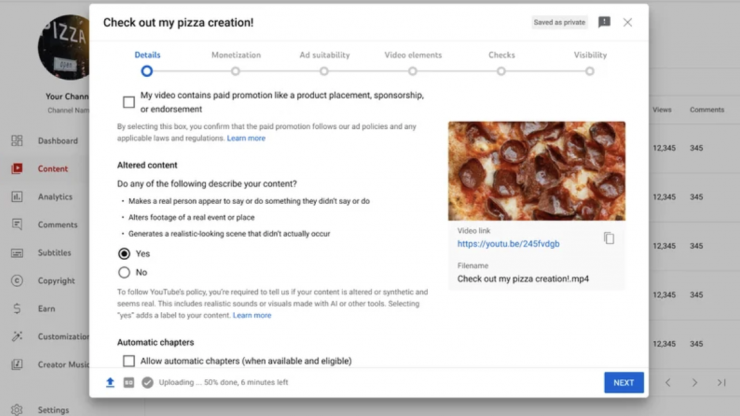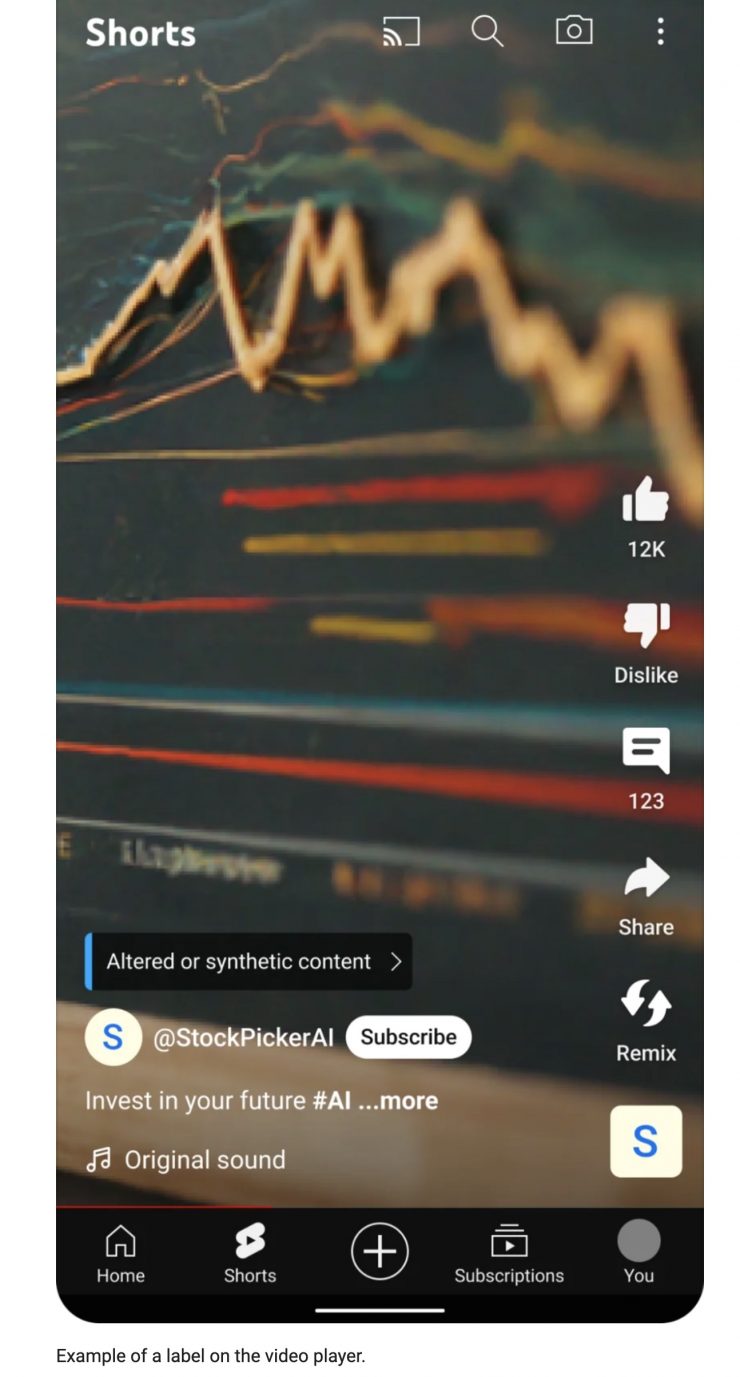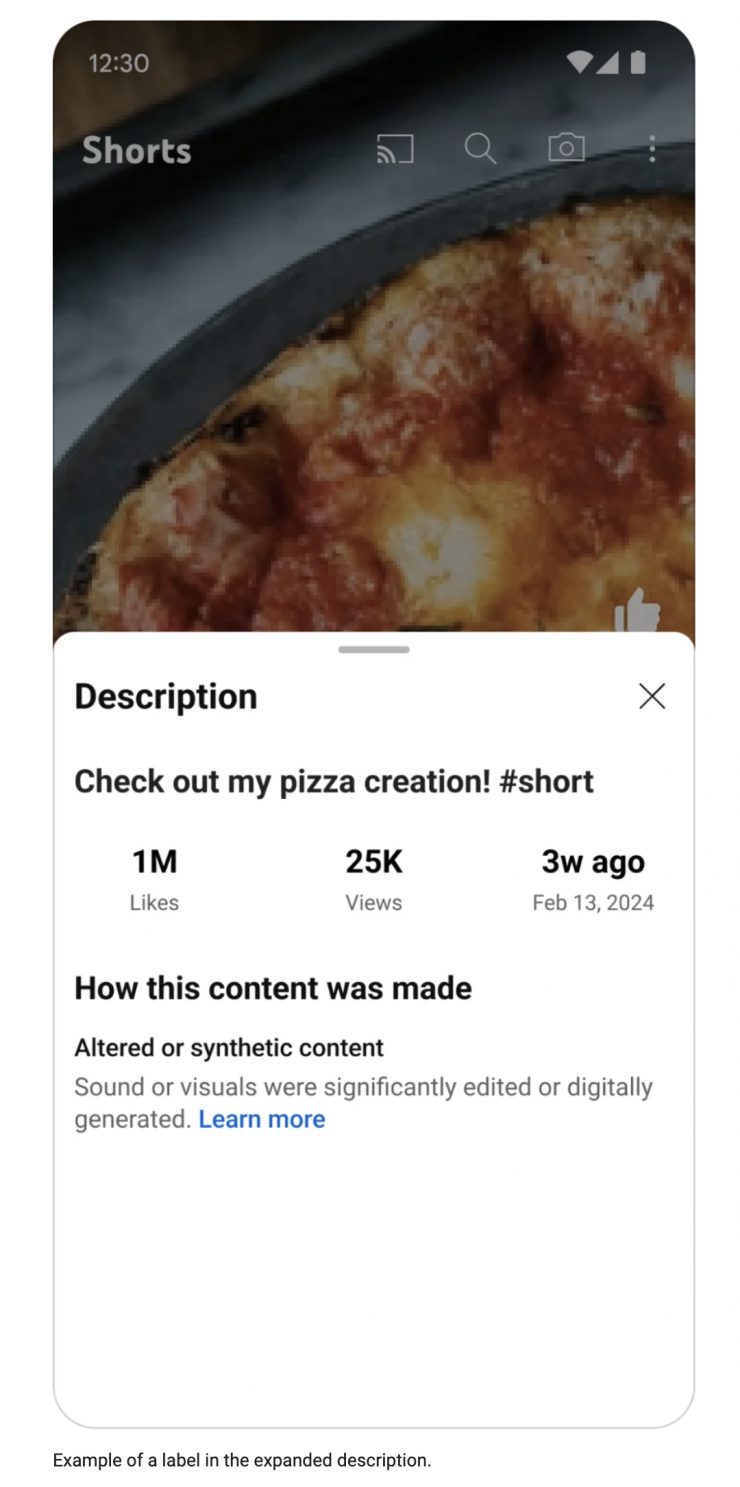
In response to the continued enhancement and push of AI-generated images and video, YouTube is introducing a tool in Creator Studio that will require creators to disclose when their content has been ‘altered in ways that seem realistic.’
Here is what was written on the YouTube Blog:
Creator Studio will require creators to disclose to viewers when realistic content (content a viewer could easily mistake for a real person, place, or event) is made with altered or synthetic media, including generative AI.

These disclosures will appear as labels in the expanded description or on the front of the video player. YouTube states that they are not requiring creators to disclose content that is clearly unrealistic, animated, includes special effects, or has used generative AI for production assistance.
The whole rationale behind the new label is to strengthen transparency with viewers and build trust between creators and their audiences.
Some examples of content that requires disclosure include:
- Using the likeness of a realistic person: Digitally altering content to replace the face of one individual with another’s or synthetically generating a person’s voice to narrate a video.
- Altering footage of real events or places: Such as making it appear as if a real building caught fire, or altering a real cityscape to make it appear different than in reality.
- Generating realistic scenes: Showing a realistic depiction of fictional major events, like a tornado moving toward a real town.

According to YouTube, for most videos, a label will appear in the expanded description, but for videos that relate to more sensitive topics such as health, news, elections, or finance, they will also show a more prominent label on the video itself.
In the weeks ahead you will start to see labels roll out across all YouTube surfaces and formats, beginning with the YouTube app on your phone, and soon on your desktop and TV.
What happens if you constantly abuse the policy and fail to disclose it?
YouTube states that if you purposely choose not to disclose this information YouTube may add a label even when a creator hasn’t disclosed it, especially if the altered or synthetic content has the potential to confuse or mislead people.
It will be interesting to see how YouTube will be able to determine if a video has been altered or features synthetic content. With the quality of AI-generated video improving at such a rapid rate, this may not be such an easy task.
Personally, I don’t think adding a label to something helps in the fight to reduce misinformation or fake content. Just like on X, where they still allow fake information and posts to be displayed, and then they put some information underneath saying that it isn’t real or true. It is up to platforms that have a massive reach to be more strict and to delete posts or content that has been created that is clearly false or misleading.





